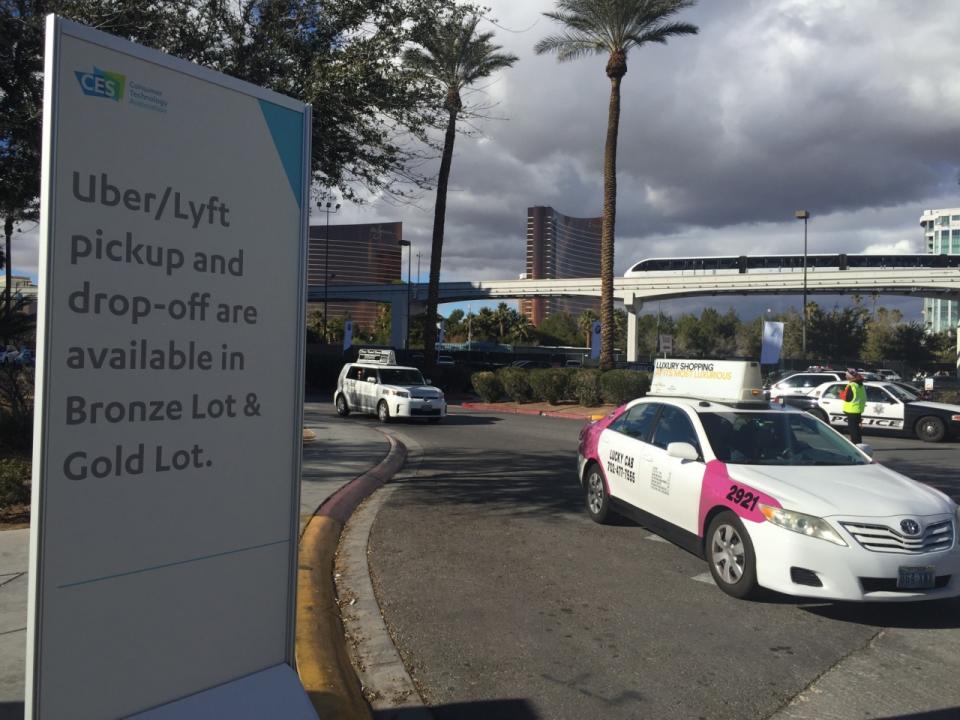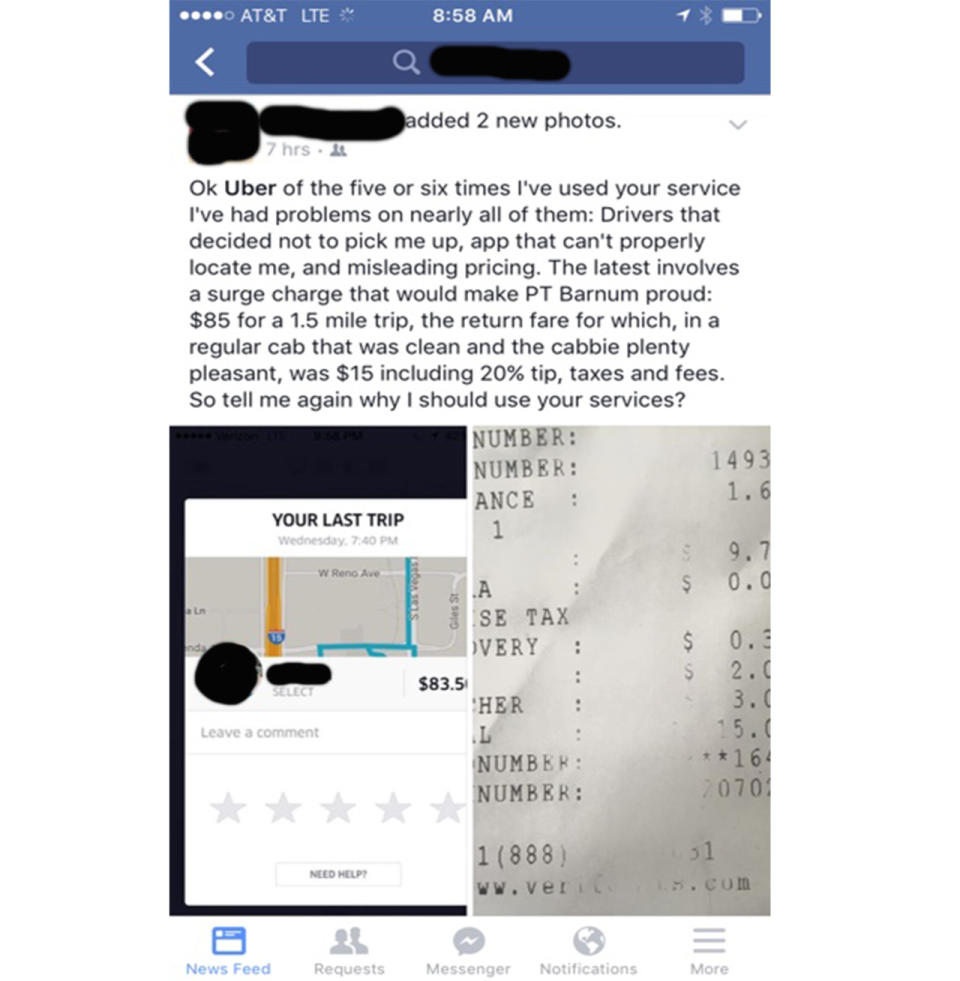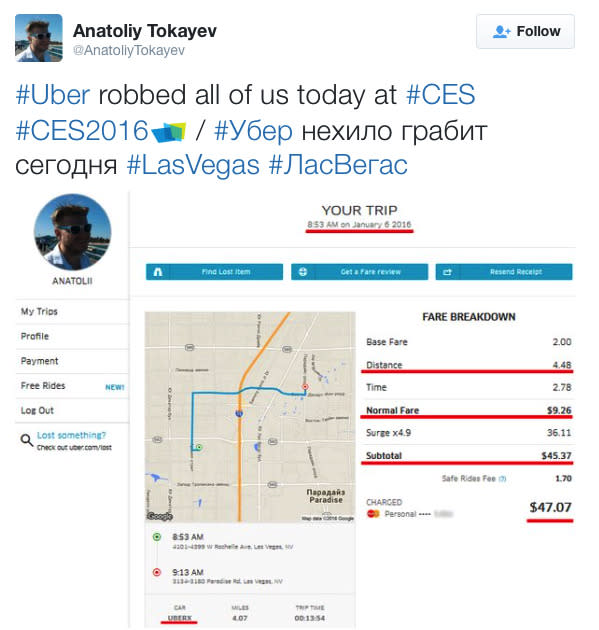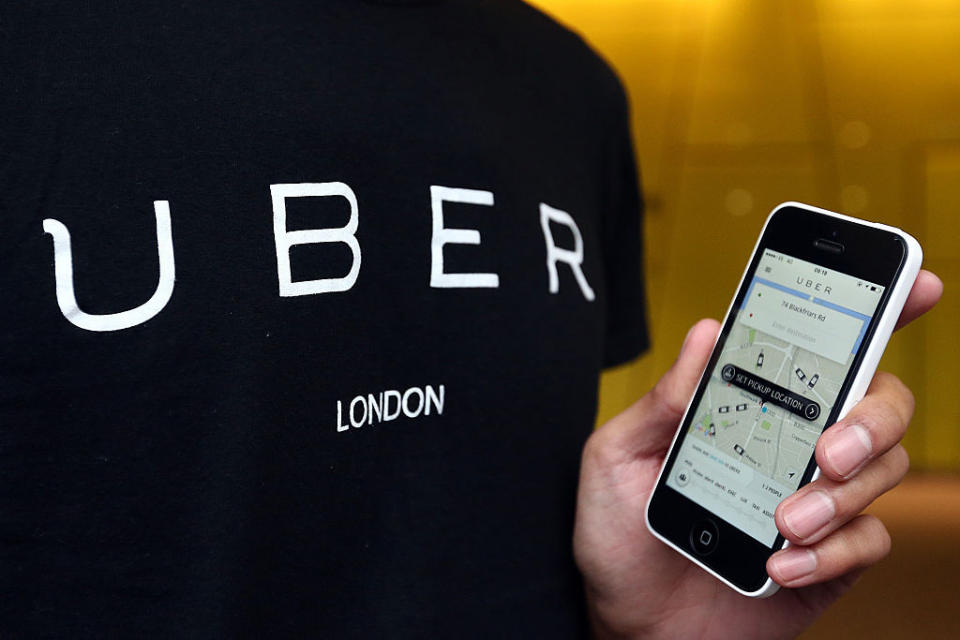Techies At CES Angry Over Uber’s Surge Pricing

The crowds of techies and investors visiting Las Vegas for the annual Consumer Electronics Show are in for a nasty surprise. Talk of the town was how Uber (and Lyft)—both of which have only been permitted to operate in Nevada for a few months—would cure the notorious transportation nightmare that is The Strip during CES, where queuing for a taxi often takes hours.
Instead, people are venting their anger on social media, their wallets considerably lightened. And for Uber, this is a problem.
The people the company wants (and needs) to impress are at CES—the techies, those that get and love technology like this. The investors that come to CES to witness the latest trends, in some cases seeking that next big investment. They’re all here, from around globe, and they’re here using Uber.
Uber is currently seeking additional investment, to the tune of $2.1 billion, valuing the company at $62.5 billion. The people that write about your product, and those that have the means to invest in it, are not the crowd you want to piss off.
Surge pricing has been making waves recently, coming to an ugly head just days ago; one man paid Uber over $800 on New Year’s Eve—8.9 times the standard fare (Uber has since agreed to refund half his bill). The gesture, though, has not silenced critics, with customers routinely feeling taken advantage of. And that message was heard loud and clear at CES, where Uber’s surge pricing topped 6 times the standard fare.
One attendee posted to his private Facebook page that Uber charged him $83.50 for a 1.5 mile journey. Outraged, he took a cab home. With a 20 percent tip and all taxes included, that same trip cost just $15.

Then there’s this Twitter user that posted an image of his fare clocking in at 4.9 times the standard rate, along with his frustration.

Another user noted a fare even higher, 5.8 times the standard rate. Our Yahoo Autos editors on site found ludicrous rates, too, with a quick check this morning showing a surge of 6.2. That’s 620 percent higher than the standard rate.
And the venting didn’t stop there. Cab drivers around Vegas were less than pleased with Uber’s advent. More than one lamented the threat to their livelihoods—while saying at the same time that Uber drivers wouldn’t make enough to support themselves or justify the long-term costs in vehicles and insurance. One taxi driver told Yahoo Autos that he guessed a successful Uber driver in Vegas would earn only $30,000 a year, after Uber’s fees: “It’s such a scam,” he said.
With limited public transit, Vegas has been designed with taxis as a bloodstream for moving people around the city. Uber and Lyft were not granted the preferred pickup locations outside many casinos like taxis, so when you order a car from the app, it arrives with instructions as to where to meet it. In many cases this resulted in 15 minutes of wandering about, before either locating the car or giving up and grabbing another beer or ten. Based on feedback from CES attendees, Lyft seemed slightly better at navigating this issue.
Not everyone agreed that Uber was overly expensive, though: As Dieter Bohn, executive editor of The Verge, found out, “Uber in Las Vegas during CES is obscenely, scandalously inexpensive.”
That is, when there’s not a surge going on.

Lyft’s equivalent to surge pricing has a cap of 200 percent (or 2 times the standard fare). So, in theory, during peak times it makes sense that Lyft would remain more cost effective. Uber, while quickly becoming a savior for many, struggles to compete when things get busy—which, given the company’s rise to fame, is occurring more often.
So what’s next for Uber and the debate on surge pricing?
The company, for its part, is sticking by its policy: “When more people need rides than there are drivers on the road, surge pricing incentivizes drivers to offer rides where and when they are needed most,” said Uber spokeswoman Susie Heath to Yahoo Canada. “Riders are repeatedly notified about the pricing directly within the app and asked to confirm and accept increased fares, or can opt for a notification when prices drop.”
Yahoo Tech’s David Pogue also doesn’t see an issue with Uber’s pricing, telling me: “You know in advance what the surge pricing will be—accepting or declining is up to you. You should be furious at Uber no more than you should be furious at Tesla for charging $100,000 per car, or certain fancy restaurants for charging $36 for a hamburger. If you don’t like the price, you don’t have to buy.”
Pogue’s point is a fair one, but can you really survive—upping prices by 5,6,7, 8.9 times over the standard rate—when your competition are not? (Lyft says it will not raise its 200 percent cap.) And regardless of whether there’s nothing morally wrong with what Uber is doing (it is their business after all) you don’t want to bite off the hands that may feed you—which if you listen to those at CES, Uber already has.

 Yahoo Autos
Yahoo Autos 